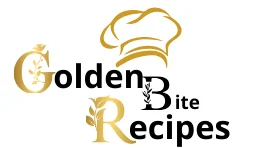Should Italian sausage be cooked before adding to sauce? This is a question that sparks debate among home cooks and professional chefs alike. When preparing pasta dishes, few ingredients pack as much flavor and richness as Italian sausage. Its savory, herbaceous profile has the power to transform a simple tomato sauce into a culinary masterpiece. However, whether to cook the sausage first or add it raw is a critical decision that affects the safety, texture, and overall taste of your dish. Let’s explore why cooking the sausage before adding it to your sauce makes all the difference, and how to do it the right way to ensure a delicious and satisfying result.
Table of Contents
Different Types of Italian Sausage: Should Italian Sausage Be Cooked Before Adding to Sauce?
Before we delve into the best methods for cooking Italian sausage, it’s essential to understand the different types available. Each variety has its own distinct flavors and characteristics, which can influence the cooking process and how it complements your sauce. Choosing the right sausage can elevate your pasta dish, so let’s take a closer look at some popular options and their unique attributes:
Sweet Italian Sausage
Sweet Italian sausage is a mild variety, typically seasoned with fennel seeds and sometimes a hint of garlic. Its subtly sweet and savory profile pairs beautifully with tomato-based sauces, adding depth without overpowering other flavors. This sausage is a great choice for classic spaghetti or marinara dishes.
Hot Italian Sausage
For those who love a little heat, hot Italian sausage is the perfect option. Infused with red pepper flakes, this spicier alternative adds a fiery kick to your sauce. It’s ideal for creating bold, robust pasta dishes and works especially well when balanced with creamy or slightly sweet elements in the sauce.
Mild Italian Sausage
Mild Italian sausage offers a more subdued flavor profile, blending herbs like parsley and oregano with a touch of black pepper. This variety is versatile and can be used in nearly any pasta dish, making it a go-to choice for cooks who prefer a gentler, more balanced flavor.
Casing-Free Sausage
Casing-free sausage is a convenient option, especially for those who prefer crumbled sausage in their sauce. Without the casing, it’s easy to break up the sausage while cooking, allowing it to blend seamlessly into the sauce. This option is perfect for recipes where texture and ease of preparation are priorities.
Beef-Based Sausage
Some Italian sausages are made entirely from beef, offering a leaner yet still flavorful option. These sausages pair particularly well with hearty, thick sauces, such as ragù or Bolognese. Their robust flavor complements ingredients like garlic, onions, and fresh herbs, adding richness to your pasta dish without being overly heavy.
By understanding these types of Italian sausage, you can choose the perfect one to complement your dish and ensure your cooking method enhances its unique qualities. Whether you prefer a mild sweetness or a spicy punch, there’s an Italian sausage to suit every palate and pasta sauce.
The Risks of Cooking Italian Sausage in Sauce
Adding raw Italian sausage directly into your pasta sauce might seem like a time-saving option, but this approach comes with several risks that can affect both the safety and quality of your dish. Here’s why cooking the sausage beforehand is the better choice:
1. Food Safety Issues
Raw sausage can contain harmful bacteria such as Salmonella or E. coli, which pose a risk of foodborne illness if not properly cooked. Simply simmering raw sausage in sauce may not ensure it reaches the safe internal temperature of 160°F as recommended by the USDA. Cooking the sausage thoroughly beforehand eliminates this risk, making your dish safe to enjoy.
2. Greasy Sauce
When raw sausage is cooked directly in the sauce, the fat from the meat is released into the dish during cooking. This can result in a greasy texture, overwhelming the sauce’s flavors and making the dish less appetizing. Pre-cooking the sausage allows you to render and drain the excess fat, leaving behind only the rich, savory essence to enhance your sauce.
By taking the extra step to cook your sausage before adding it to your sauce, you can avoid these pitfalls and ensure your pasta dish is both safe to eat and deliciously balanced.
Why It’s Better to Cook Sausage First
Cooking Italian sausage before adding it to your sauce is more than just a step in the recipe—it’s a crucial practice that enhances both the safety and quality of your dish. Here’s a closer look at the key reasons why this approach is recommended:
1. Prevents Foodborne Illness
Cooking Italian sausage thoroughly before incorporating it into the sauce ensures it reaches the safe internal temperature of 160°F, effectively eliminating harmful bacteria such as Salmonella or E. coli. This step guarantees that your dish is not only delicious but also safe to serve. Skipping this step or relying on the sauce to cook the sausage fully may leave parts of the meat undercooked, putting diners at risk of foodborne illness.
2. Enhances Flavor
Cooking the sausage separately allows you to render out excess fat while capturing its rich, savory essence. The fat rendered during the cooking process can be drained to prevent your sauce from becoming overly greasy. This step intensifies the sausage’s natural flavors, which are then infused into the sauce when added. The result is a well-balanced dish where the sausage enhances the sauce rather than overpowering it with oiliness.
3. Preserves the Sausage’s Texture
Pre-cooking ensures the sausage retains its juicy, tender texture. When added raw and left to cook directly in the sauce, sausage can become tough or rubbery due to uneven cooking and prolonged exposure to liquid. Cooking it first allows you to control its texture and ensures it remains a delicious complement to the sauce.
4. Allows for Cooking Versatility
By cooking the sausage ahead of time, you can use various methods like pan-frying, grilling, or baking, each adding unique layers of flavor to the meat. For example, grilling adds a smoky char, while pan-frying creates a caramelized crust. These pre-cooking methods enhance the sausage’s taste and provide more control over how it complements the sauce.
For more on food safety, check out this guide on Chicken Italian Sausage Pasta Recipe.
How to Cook Italian Sausage Before Adding to Sauce

To get the most flavor out of your Italian sausage, here are some effective cooking methods:
- Pan-Frying: One of the quickest and easiest methods, allowing you to brown the sausage and release flavorful oils into the pan.
- Grilling or Broiling: Adds a smoky, charred flavor, perfect for those who like a grilled finish to their sausage.
- Baking: Ideal for cooking a large batch of sausages evenly, this method helps maintain moisture and juiciness.
- Simmering or Boiling: A gentler method, perfect for ensuring the sausage stays tender and juicy before adding to your sauce.
Be sure to check the internal temperature of the sausage to make sure it reaches 160°F. This is the optimal temperature for both safety and flavor.
For more details on cooking methods, refer to this grilling guide on sausage.
Creative Ways to Add Sausage to Pasta Sauce
Once your sausage is cooked, there are several ways to incorporate it into your pasta sauce:
- Slicing vs. Crumbling: If you want a smoother texture, crumbling the sausage works best. For a heartier bite, slice the sausage and let it sit in the sauce to absorb flavors.
- Simmering in Sauce: After cooking, simmer the sausage in your sauce for a few minutes to let the flavors meld.
- Pairing with Vegetables and Herbs: Adding vegetables like bell peppers or onions, and herbs such as basil and oregano, can help complement the richness of the sausage.
For ideas on what to serve with your pasta dish, check out this post on What to Serve with Tuscan Soup.
Common Mistakes When Cooking Italian Sausage
To guarantee your dish turns out perfectly, avoid these common mistakes:
- Under or Overcooking the Sausage: Sausage that’s not cooked long enough can be unsafe to eat, while overcooking can result in a dry texture.
- Not Removing the Casing: If you plan to crumble the sausage, be sure to remove the casing before cooking.
- Neglecting to Drain Excess Fat: After cooking the sausage, drain any excess fat before adding it to your sauce to keep the dish from becoming too greasy.

Frequently Asked Questions (FAQs)
- Do I need to cook Italian sausage before adding it to my pasta sauce?
Yes, it’s essential to cook the sausage beforehand to guarantee it reaches a safe temperature and prevents excess fat from ruining your sauce. - Can I cook Italian sausage in the sauce?
While you can, it’s better to cook the sausage separately to control the texture and fat content. Cooking it directly in the sauce may lead to a greasy, less flavorful outcome. - What’s the best way to cook Italian sausage for sauce?
Pan-frying or baking are great methods, as they allow you to control the texture and fat release before adding the sausage to your sauce. - Is it okay to add raw sausage to pasta sauce?
It’s not recommended because raw sausage may not reach a safe temperature and can make your sauce greasy.
Conclusion
When making pasta dishes with Italian sausage, cooking the sausage before adding it to the sauce is always the best choice. It guarantees food safety, improves flavor, and prevents your sauce from becoming greasy. Whether you choose to pan-fry, grill, or bake, taking the time to cook your sausage properly will raise your dish to new heights.

1 thought on “Should Italian Sausage Be Cooked Before Adding to Sauce? A Comprehensive Guide”